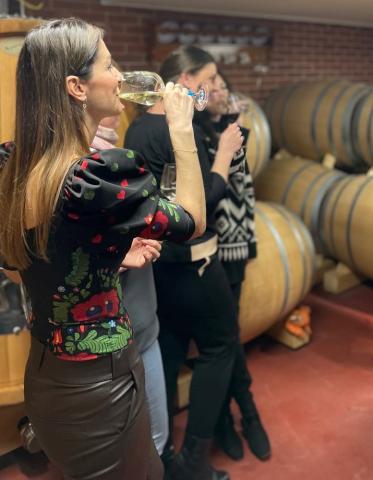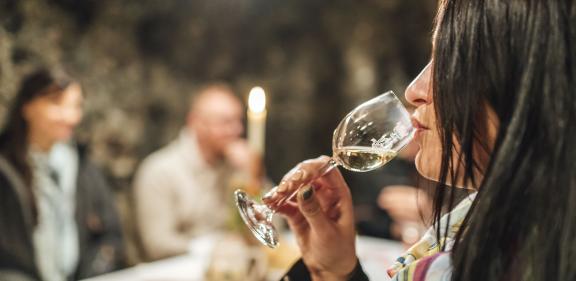How to properly taste wine?
If you find yourself at a wine tasting for the first time, what happens during it can seem like a "Spanish village". In order to really enjoy the tasting, it is good to know how to properly taste the wine.
How to hold a wine glass?
The first thing to know is how to hold the glass correctly. We always hold it by the stem, not by the "tummy". This is done in order to protect the wine from the heat of the fingers, which could spoil its taste. The number of fingers with which we hold the stem is proportional to the size of the glass. White wine, which is poured into smaller glasses, just needs to be held with the thumb and forefinger, for a medium-sized glass, the middle finger is added. If we have a large red wine glass, we can also help our ring fingers.

Photo: Carpate Diem
Color rating
The wine is first judged or evaluated with the eyes. We spin the glass with wine, it runs down the edge of the glass. Basically, the more it runs down the side of the glass, the fuller it is. Then we evaluate the color - we tilt the glass to a 45-degree angle and hold it in front of a white background.
In the case of white wines, the darker the wine, the older it is. For red wines, it is the other way around, the lighter the red wine appears, the older it is, as the color pigments settle to the bottom as it ages.
Smell of wine rating

The smell is evaluated after the color. We hold our nose in the glass and gently inhale through it. We repeat this procedure several times until we recognize all the nuances. Naming them is a matter of experience and training, here too, training makes perfect. In general, several groups of scents are distinguished (for example, floral, herbal, fruity, spicy, smoky).
Evaluation of tastes

After we have evaluated the wine by sight and smell, the taste comes next. We take a sip from the wine and hold it in our mouth for a few seconds, while "rolling" it with our tongue. The feeling that the wine evokes in the mouth, its texture is also recorded - terms such as velvety or creamy are used to describe it.
The question is whether to spit or swallow the wine during tasting. It's a matter of preference. Professionals usually spit the wine into containers that are prepared for it, but most laymen swallow it. Stronger stomachs can drink 5 or more samples during a tasting, but a sommelier or oenologist, for example, when judging at a competition, tastes more samples.
Another question is whether the samples they pour us should be drunk or not - that's also a matter of preference. The real tasting is the tasting and evaluation of the wine, but it does not have to be connected with its consumption at the given moment. Therefore, during tastings, containers are always prepared into which the leftover wine from the glasses can be poured.
Evaluation of the overall impression
Professional wine tasters evaluate with points. As laymen, of course, we don't have to do this, but it makes sense to make notes on individual wines. This is the only way to evaluate the overall impression of the wine. However, whether you agreed with others in your judgments is not the most important thing during the tastings - taste is an explicitly individual matter, and this also applies to wine.


























